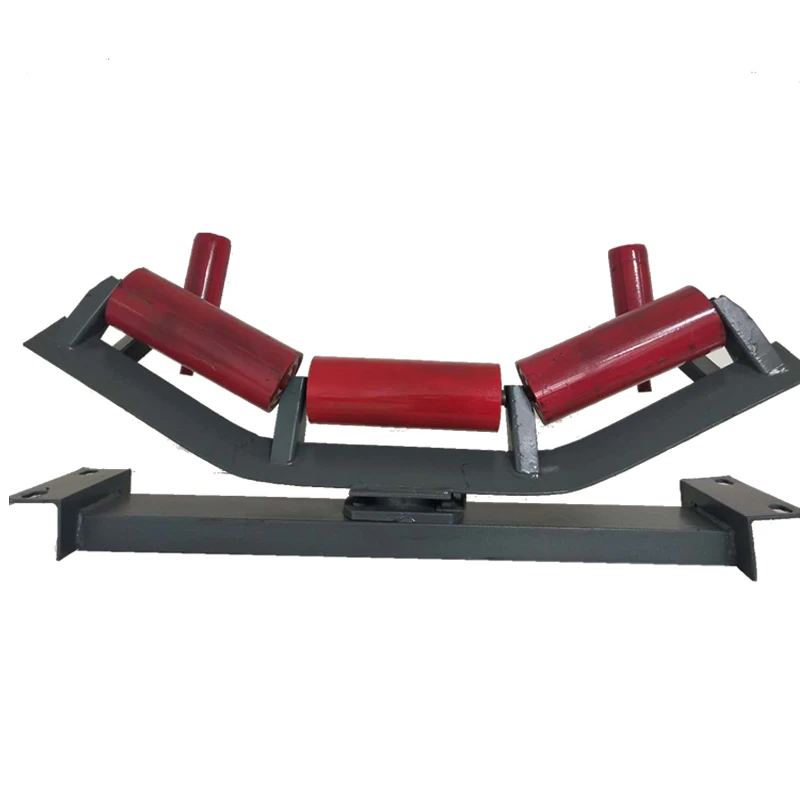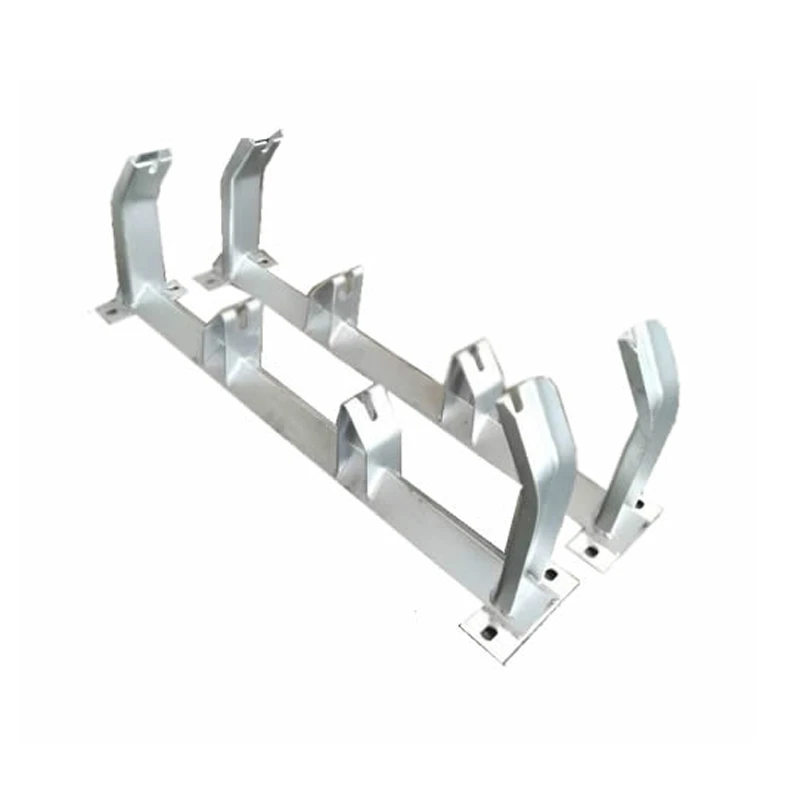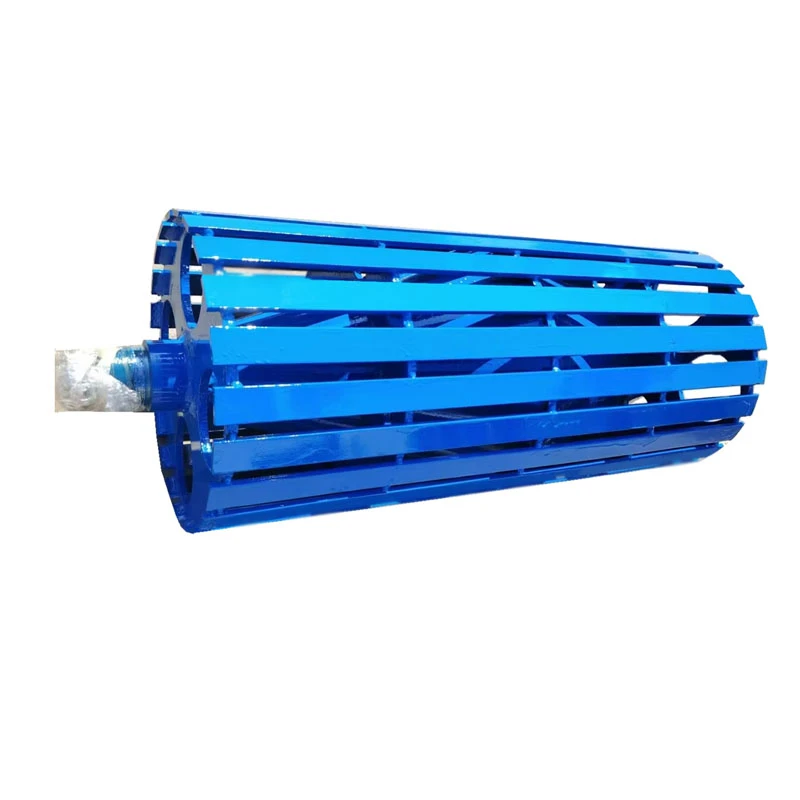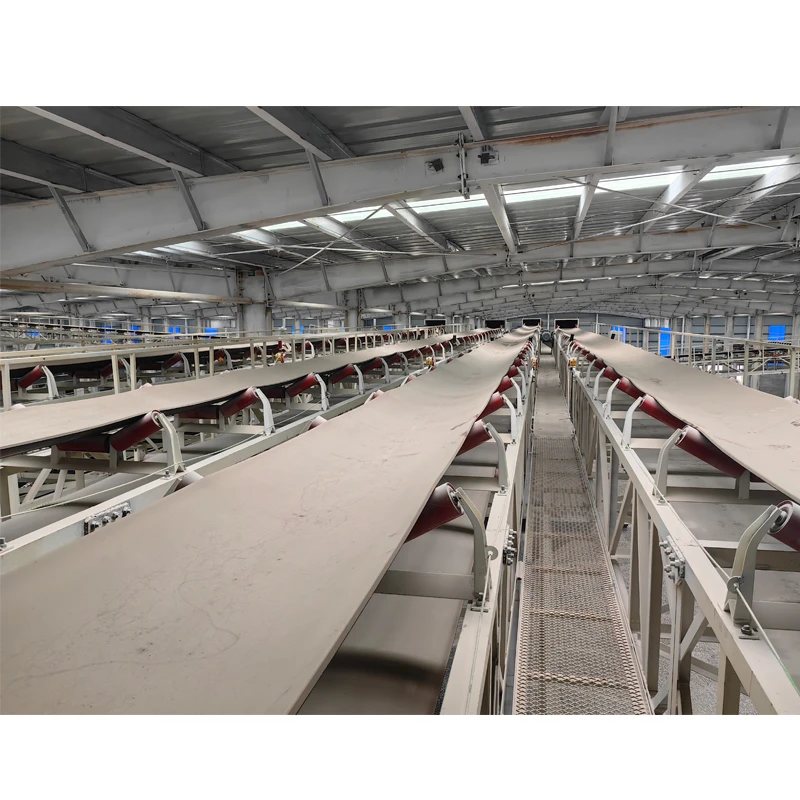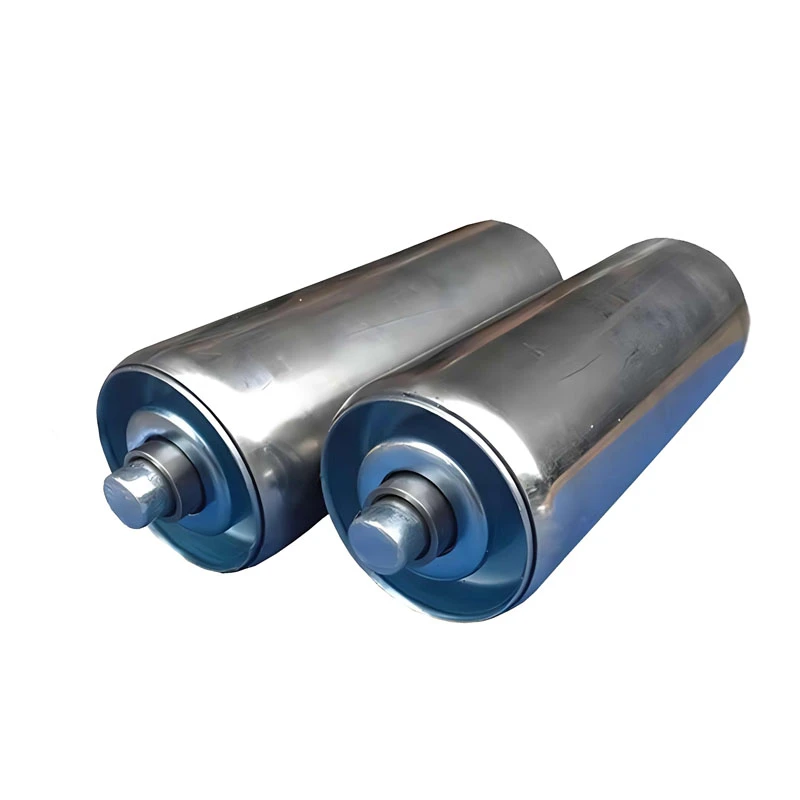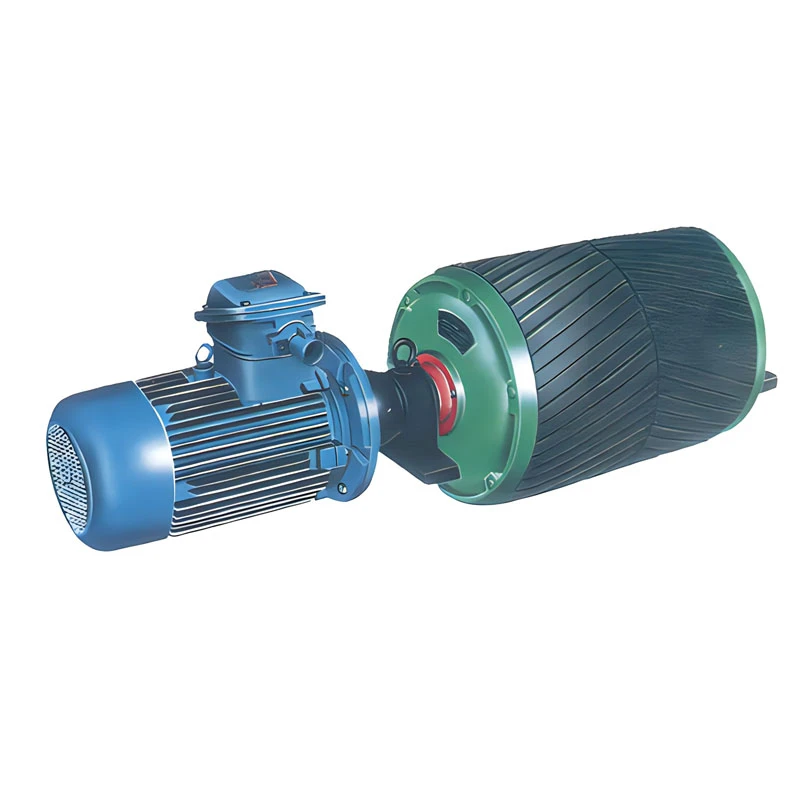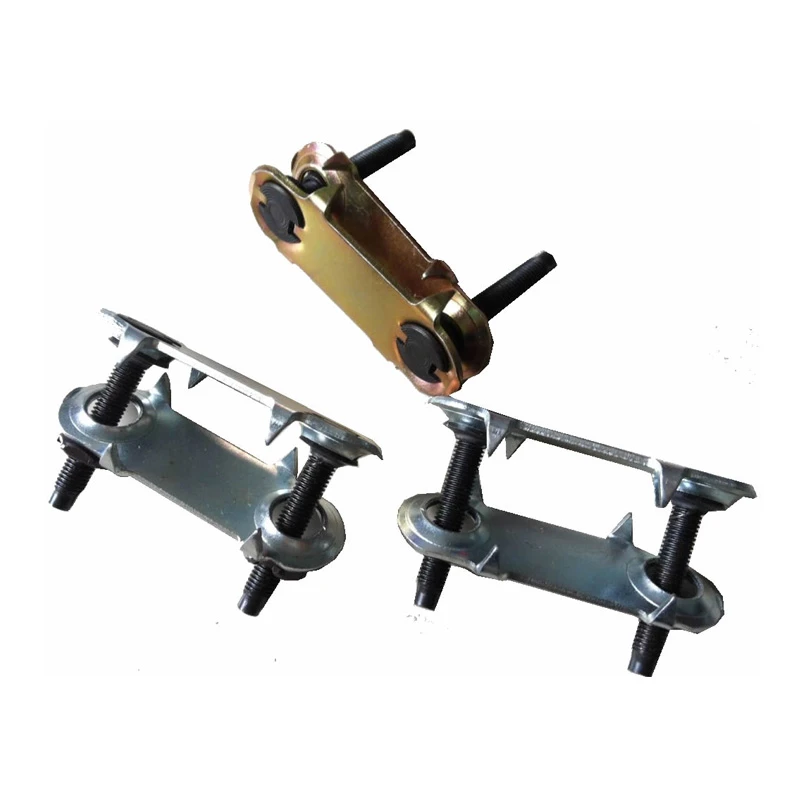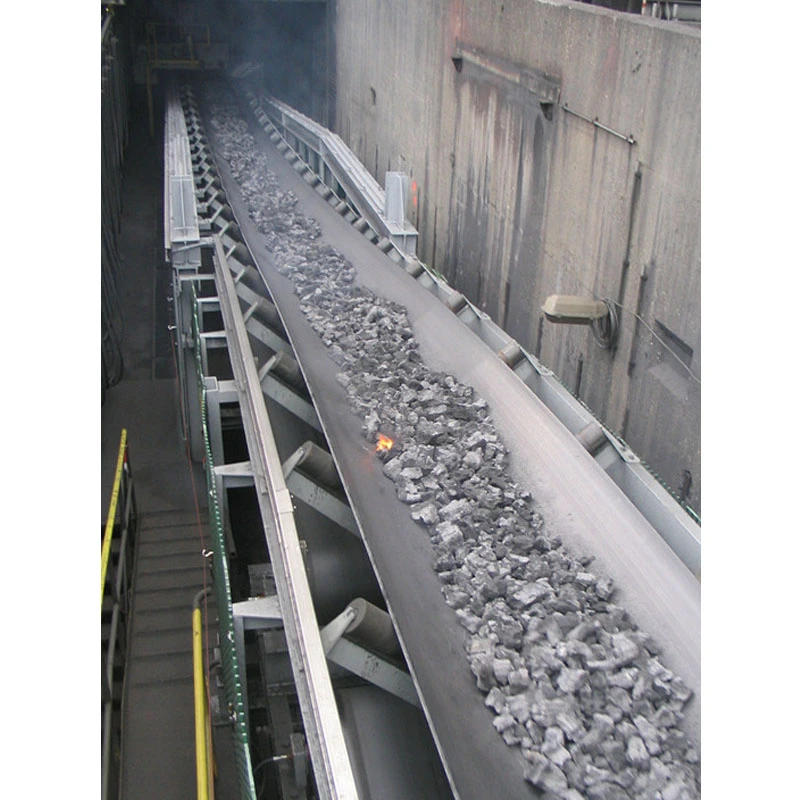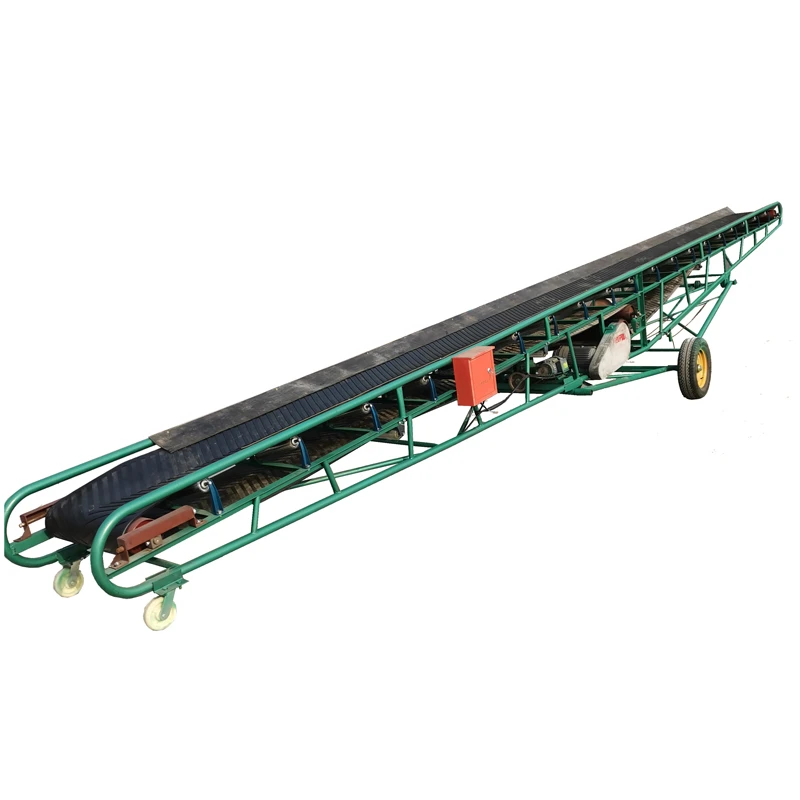Strategic Sourcing of Pre-Owned Conveyor Systems for Enhanced Operational Efficiency
In today's dynamic industrial landscape, where operational efficiency and cost-effectiveness are paramount, the market for pre-owned industrial equipment is experiencing significant growth. This trend is particularly evident in material handling, where the demand for robust and reliable solutions remains constant. Investing in a second hand conveyor belt for sale represents a pragmatic approach for businesses aiming to optimize their capital expenditure without compromising on performance or safety. This strategy not only offers substantial financial savings but also aligns with global sustainability initiatives by extending the lifecycle of valuable industrial assets. The meticulous reconditioning processes applied to these belts ensure they meet stringent operational standards, making them a viable alternative to new installations for a wide array of applications across diverse sectors. Furthermore, the immediate availability of reconditioned belts can significantly reduce lead times for urgent operational needs, providing a critical advantage in fast-paced production environments. As industries increasingly prioritize resource efficiency and circular economy principles, the pre-owned conveyor belt market is poised for continued expansion, offering tailored solutions for every scale of operation from small-scale logistics to heavy-duty mining and metallurgical processes. The quality assurance protocols, including comprehensive material inspection and performance testing, are crucial in differentiating reliable suppliers in this burgeoning market, ensuring that every conveyor belt for sale offers a dependable and economically sound solution for continuous material flow.
The industry is witnessing a clear shift towards more sustainable procurement practices, driving the robust market for pre-owned industrial components. This paradigm shift encompasses a range of equipment, with a particular emphasis on high-wear components like conveyor belts due to their significant material and manufacturing costs when new. The concept of sourcing a second hand conveyor belt for sale is no longer merely about cost reduction; it has evolved into a sophisticated strategy for optimizing resource allocation and minimizing environmental impact. Reputable suppliers in this segment do not simply resell used belts; they employ rigorous refurbishment processes that often involve cutting-edge technologies for material testing, surface preparation, and re-vulcanization to restore the belt's integrity and extend its operational lifespan. These reconditioned belts are then subjected to the same, if not more stringent, quality control procedures as newly manufactured belts to ensure they meet performance specifications such as tensile strength, abrasion resistance, and dimensional stability. This meticulous approach provides businesses with a dependable solution that delivers comparable performance to new products but at a fraction of the cost, making it an attractive option for budget-conscious projects or for organizations looking to quickly scale their operations. The availability of diverse types of pre-owned conveyor belt, from lightweight PVC to heavy-duty rubber, further broadens their applicability across various industrial contexts, reinforcing their role in the circular economy.
The Rigorous Reconditioning and Quality Assurance Process for Used Conveyor Belts
While the term "manufacturing process" typically refers to the creation of new products, for a second hand conveyor belt for sale, it pertains to a comprehensive reconditioning and quality assurance protocol designed to restore the belt to optimal operational standards. This intricate process begins with the initial assessment of incoming used belts, where expert technicians meticulously evaluate the structural integrity of the carcass, the condition of the covers, and the presence of any significant damage. Material analysis often involves non-destructive testing (NDT) techniques, such as ultrasonic inspection or magnetic particle testing for steel cord belts, to detect internal flaws or delaminations that may not be visible externally. For PVC and rubber belts, durometer readings are taken to assess hardness and elasticity, ensuring the material retains appropriate mechanical properties. The manufacturing, or rather, reconditioning, process then proceeds through several critical stages: thorough cleaning to remove adhering material and contaminants, precise repair of minor cuts, gouges, or edge damage using specialized vulcanization techniques or cold bonding compounds, and often, the removal of excessively worn layers.
Key manufacturing processes involved in restoring a high-quality conveyor belt include specialized hot or cold vulcanization for splicing and patch repairs, ensuring homogeneous material bonding that can withstand operational stresses. For certain belt types, resurfacing or re-skimming processes may be employed to restore the cover thickness and abrasion resistance. Post-repair, belts undergo rigorous quality control inspections, adhering to international standards such as ISO 9001 for quality management systems and ANSI B20.1 for safety standards on conveyors and related equipment. These inspections verify critical parameters like tensile strength, elongation at break, splice integrity, and overall dimensional stability. The projected service life of a reconditioned belt, while dependent on its original condition and application, can often be 70-90% of a new belt, representing significant value. Applicable industries benefiting immensely from these reconditioned belts include bulk material handling in mining, aggregate production, cement manufacturing, and power generation, where robust `conveyor belt for sale` solutions are constantly needed. Furthermore, in less abrasive environments like warehousing, logistics, and packaging, refurbished Lightweight PVC Conveyor Belts offer excellent performance. The inherent advantages of using such belts include significant cost savings, reduced lead times compared to new belt fabrication, and a substantial contribution to environmental sustainability through resource reuse.

The detailed inspection and testing procedures are pivotal to the reliability of any second hand conveyor belt for sale. This includes evaluating the adhesion between plies, a critical factor for belt longevity, often using peel strength tests. For specialized applications, belts might undergo additional tests such as flame retardancy for mining environments or oil and grease resistance for industrial settings. The structural integrity of the belt's carcass, whether textile plies or steel cord, is assessed for fatigue and damage, influencing the decision for repair or rejection. Suppliers with advanced reconditioning facilities can perform hot vulcanization on-site, a process that chemically bonds rubber compounds under heat and pressure, creating splices that are often stronger than the original belt material. This re-manufacturing capability ensures that even a pre-owned belt can offer superior mechanical properties. The final stages involve precise edge trimming and surface finishing to ensure smooth operation and prevent material spillage. Through this rigorous multi-stage process, a high-quality conveyor belt for sale emerges, ready for deployment in demanding sectors such as petrochemicals, where chemical resistance is key, or metallurgy, requiring high abrasion resistance. This systematic approach guarantees not only the performance but also the safety and long-term durability of the reconditioned equipment, supporting sustainable industrial practices.
Key Technical Parameters and Performance Metrics for Conveyor Belts
Understanding the technical parameters of a conveyor belt, whether new or a second hand conveyor belt for sale, is crucial for optimal system design and operational efficiency. Primary parameters include tensile strength, typically measured in N/mm (Newtons per millimeter of belt width), which indicates the maximum stress the belt can withstand before breaking. For general industrial applications, values often range from 200 N/mm to 2000 N/mm, with specialized belts exceeding 5000 N/mm. Abrasion resistance, often quantified by the DIN abrasion loss (mm³), is critical for belts handling abrasive materials like aggregates or coal; lower values indicate better resistance. Operating temperature range is another vital specification, with standard PVC belts typically performing between -10°C to +70°C, while specialized rubber compounds can handle much wider extremes. The overall thickness of the belt, including covers and carcass, directly impacts its durability and load-bearing capacity, commonly ranging from 3mm to 30mm or more. Ply count, referring to the number of fabric layers (e.g., polyester, nylon), dictates the belt's strength and stability, with common configurations ranging from 2 to 6 plies for textile belts.
Further technical details include cover hardness, measured in Shore A durometer, affecting grip and wear characteristics; for PVC belts like the Lightweight PVC Conveyor Belt, this typically falls between 70 to 90 Shore A. Elongation at break, expressed as a percentage, measures how much the belt can stretch before failure, with lower elongation generally indicating better dimensional stability and less maintenance requirement for tensioning. Troughability, particularly for troughing idler systems, is also important, determined by the belt's lateral flexibility. Energy efficiency in a conveyor belt for sale is often a function of its rolling resistance and friction coefficient; belts with lower friction covers can significantly reduce power consumption over long distances, leading to substantial energy savings. Corrosion resistance is paramount in industries such as chemical processing or wastewater treatment, where specialized cover compounds (e.g., oil-resistant PVC or nitrile rubber) protect the carcass from degradation. For example, the Lightweight PVC Conveyor Belt offers excellent resistance to oils, greases, and certain chemicals, making it versatile. The careful selection of a second hand conveyor belt for sale based on these parameters ensures that it meets the specific demands of the intended application, maximizing both performance and economic benefit.
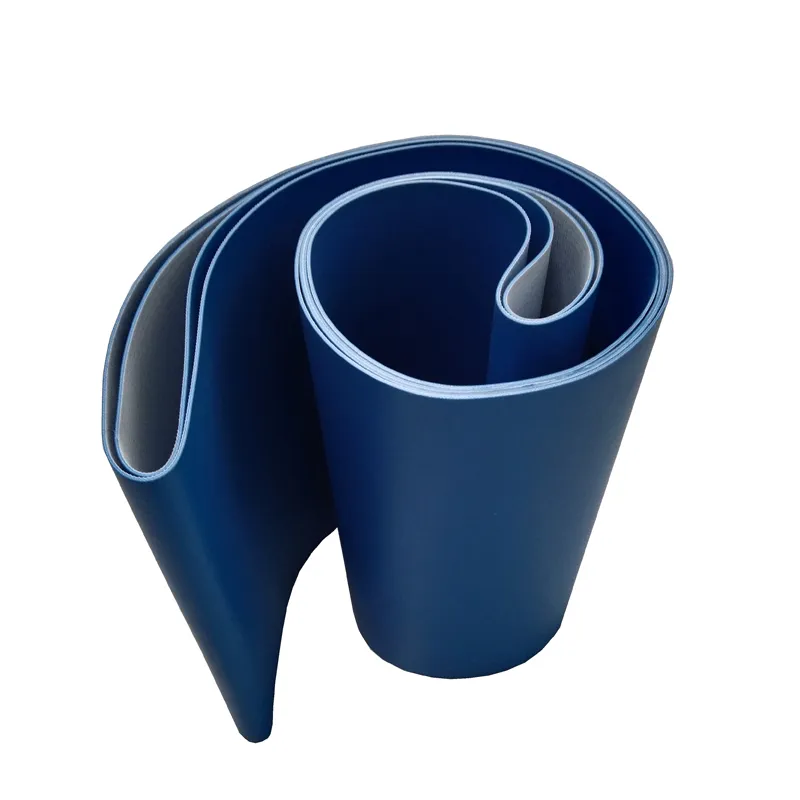
To illustrate the potential of a high-quality second hand conveyor belt for sale, consider the comparative data in the table below, juxtaposing typical specifications of a new Lightweight PVC Conveyor Belt with a meticulously refurbished counterpart. This data highlights that well-maintained and reconditioned belts can offer performance metrics very close to new, especially for parameters critical to general conveying tasks.
| Parameter | New Lightweight PVC Belt (Typical) | Reconditioned Lightweight PVC Belt (High Quality) |
|---|---|---|
| Tensile Strength (N/mm) | 200 - 400 | 180 - 380 |
| Thickness (mm) | 1.5 - 6.0 | 1.4 - 5.8 (Post-Refurbishment) |
| Cover Hardness (Shore A) | 70 - 85 | 68 - 83 |
| Operating Temperature (°C) | -10 to +70 | -10 to +70 |
| Abrasion Loss (mm³, DIN) | < 150 | < 180 |
| Elongation at Break (%) | < 1.5 | < 2.0 |
| Cost Savings vs. New | N/A | 30% - 60% |
This table underscores the compelling value proposition of a high-quality second hand conveyor belt for sale. While minor variations in parameters like tensile strength or abrasion loss might exist due to previous usage, the critical point is that a professionally refurbished belt retains a significant proportion of its original performance capabilities. For many industrial applications, particularly those not operating at the absolute extremes of a belt's design limits, these reconditioned belts provide a perfectly adequate and economically superior solution. Moreover, the environmental benefit derived from extending the service life of these industrial components cannot be overstated, contributing directly to a company's sustainability objectives. The ability of a supplier to consistently deliver reconditioned belts with such reliable parameters is a testament to their expertise in inspection, repair, and quality assurance, ensuring that the integrity of the core material remains uncompromised.
Diverse Application Scenarios and Industry Adaptability
The versatility of the conveyor belt makes it indispensable across a multitude of industries, and the availability of a high-quality second hand conveyor belt for sale expands its applicability even further, providing cost-effective solutions for diverse operational needs. In the Mining and Aggregates sector, robust rubber conveyor belts are essential for transporting heavy, abrasive materials like ore, coal, gravel, and sand over long distances. Reconditioned heavy-duty belts, with their proven wear resistance and high tensile strength, offer significant capital expenditure savings while maintaining the necessary operational resilience. For the Cement and Concrete industry, where continuous material flow of clinker, cement, and aggregates is critical, pre-owned belts can be rapidly deployed to replace worn sections or expand existing systems, minimizing downtime. In the Petrochemical and Chemical industries, belts with specific resistance to oils, chemicals, and extreme temperatures are crucial. A refurbished Lightweight PVC Conveyor Belt, for example, can be an ideal choice for conveying granular or packaged chemicals, offering excellent chemical resistance properties inherent to PVC, combined with the economic benefits of a pre-owned asset.
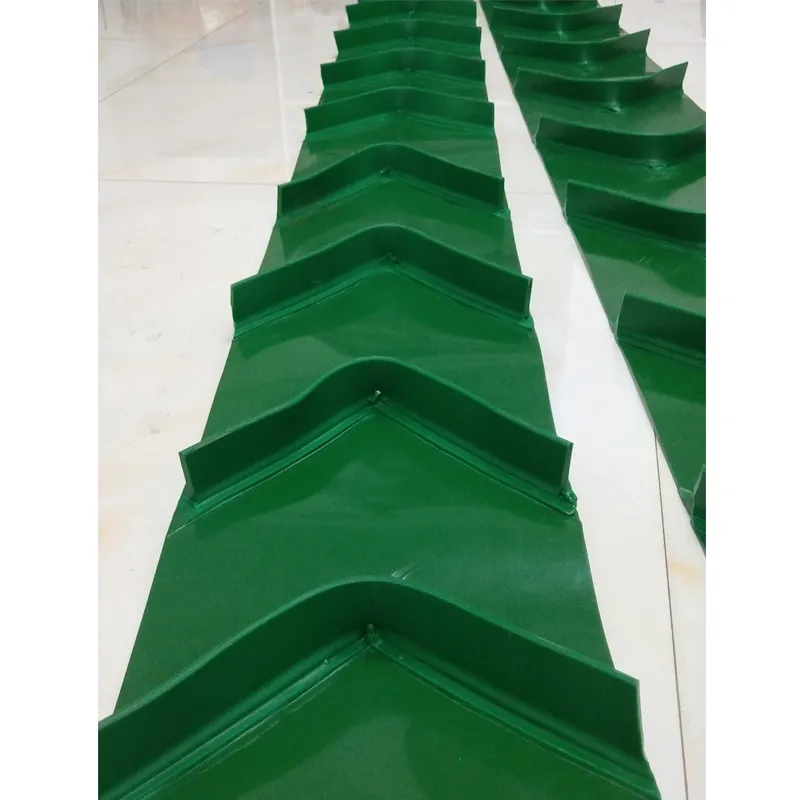
The Food and Beverage industry, while often requiring FDA-compliant materials, can still benefit from certain reconditioned conveyor belt for sale options for non-direct food contact applications, such as packaging lines, bottle conveying, or waste removal. Specialty belts like the Lightweight PVC Conveyor Belt can be engineered for hygiene and ease of cleaning, even in a reconditioned state. The Logistics and Warehousing sector extensively utilizes lighter-duty belts for package handling, sorting, and assembly lines. Here, the immediate availability and cost-efficiency of a second hand conveyor belt for sale are particularly advantageous for rapid setup or expansion of distribution centers, where capital outlay needs to be managed tightly. For Water and Wastewater Treatment plants, belts are used for conveying sludge, dewatered solids, and other by-products. Corrosion-resistant and often cleated or sidewall-equipped belts, even when reconditioned, can provide reliable transport in these challenging environments, contributing to efficient facility operations without excessive investment.
Beyond these major sectors, reconditioned conveyor belts find utility in diverse niche applications. This includes agriculture for grain handling, recycling facilities for waste sorting, automotive plants for assembly lines, and even retail for backroom operations. The inherent advantages in all these scenarios stem from the balance of performance and economic viability. Businesses can achieve significant cost reductions (often 30-60% compared to new belts) while maintaining operational continuity and contributing to a more circular economy. The rapid deployment capability of readily available second hand conveyor belt for sale options minimizes project lead times, allowing companies to react swiftly to market demands or operational changes. This flexibility, coupled with rigorous reconditioning processes that guarantee performance, positions pre-owned belts as a smart and sustainable choice for a wide spectrum of industrial and commercial applications globally.
Strategic Advantages and Manufacturer Comparison for Pre-Owned Belts
The decision to invest in a second hand conveyor belt for sale carries several strategic advantages that extend beyond mere cost savings. Primarily, it offers a significant reduction in Capital Expenditure (CAPEX), allowing businesses to free up capital for other critical investments or to enhance profitability. This is particularly appealing for startups, temporary projects, or companies undergoing rapid expansion without wishing to commit substantial resources to new equipment. Furthermore, procuring a pre-owned conveyor belt often means immediate availability, circumventing the extended lead times typically associated with custom manufacturing of new belts. This agility can be crucial in emergency replacements or for projects with tight deadlines. From an environmental standpoint, choosing a second hand conveyor belt for sale is a powerful statement of commitment to sustainability and circular economy principles. It reduces waste, conserves raw materials, and lowers the carbon footprint associated with manufacturing new products, contributing to corporate social responsibility (CSR) objectives.
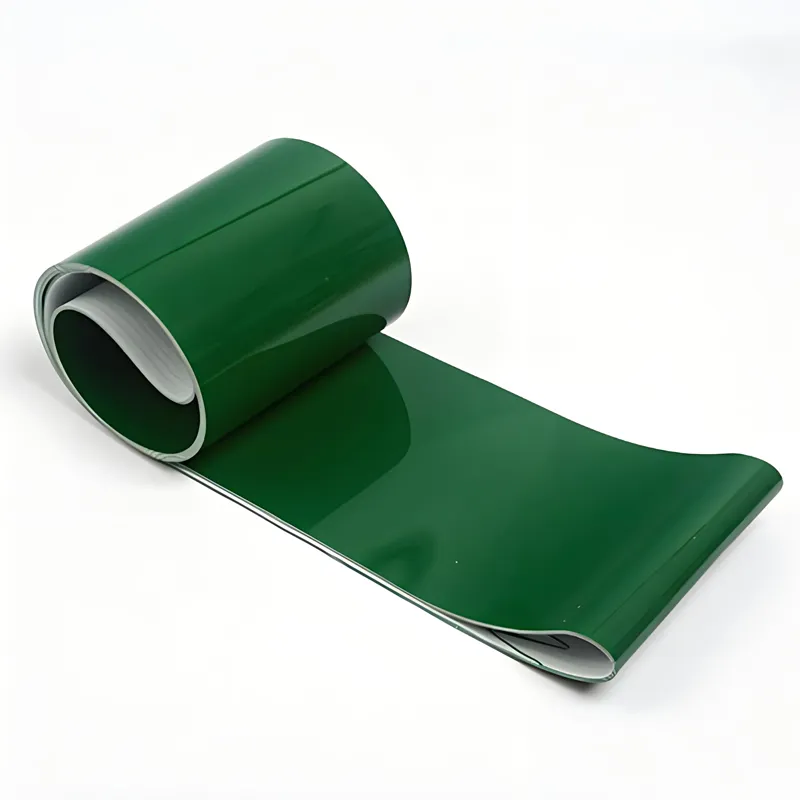
When comparing manufacturers or suppliers of a second hand conveyor belt for sale, several critical factors must be rigorously assessed to ensure a reliable and durable purchase. First, investigate their inspection protocols and refurbishment capabilities. A reputable supplier will employ advanced NDT methods, comprehensive material testing, and skilled technicians for repair and re-vulcanization. Ask for details on their quality control processes, including what standards (e.g., ISO, ASTM) they adhere to during the refurbishment of a conveyor belt for sale. Second, warranty and post-sales support are paramount. While a pre-owned item may not carry the same warranty as new, a reliable supplier will offer a clear and reasonable warranty on the reconditioned product, demonstrating confidence in their refurbishment process. Assess their responsiveness and capacity for customer support, including technical assistance and potential on-site services.
Third, historical performance and client testimonials provide invaluable insight into a supplier's trustworthiness. Seek out case studies, references from previous clients, and evidence of successful long-term deployments of their reconditioned belts. A supplier's service years in the industry can also indicate their stability and experience. Finally, transparency in reporting the belt's original condition and refurbishment work is a hallmark of a trustworthy provider. They should be able to furnish detailed inspection reports and clarify the extent of repairs undertaken. For specialized products like the Lightweight PVC Conveyor Belt, inquire about specific treatments to maintain its unique properties such as flexibility and oil resistance. By meticulously evaluating these criteria, businesses can confidently select a supplier that provides high-quality, dependable second hand conveyor belt for sale solutions, ensuring optimal performance and maximizing return on investment while championing sustainable industrial practices.
Customized Solutions and Successful Application Cases
The value proposition of a second hand conveyor belt for sale is significantly enhanced by the possibility of customization, allowing these pre-owned assets to perfectly fit specific operational requirements. While the core material and original construction of a conveyor belt are fixed, reputable suppliers can perform various modifications during the reconditioning process to tailor the belt for unique applications. This includes precision cutting to the exact width and length required, ensuring seamless integration into existing conveyor systems. Specialized splicing techniques, whether hot vulcanization for rubber belts or thermal welding for PVC belts like the Lightweight PVC Conveyor Belt, are employed to create endless loops or connect segments, optimizing belt tension and tracking. Furthermore, customization can involve the addition of cleats (flights) for incline conveying, sidewalls to prevent material spillage, or tracking guides for improved belt alignment. These post-refurbishment modifications ensure that even a second hand conveyor belt for sale delivers bespoke functionality comparable to a newly manufactured solution, but with the inherent cost and environmental benefits.
Consider a case study from a regional distribution center that needed to rapidly expand its parcel sorting capabilities. Facing budget constraints and a tight deadline, purchasing new custom-fabricated belts was not feasible. Instead, they opted for a selection of reconditioned Lightweight PVC Conveyor Belts. Our supplier identified several suitable pre-owned belts, which were then precisely cut to the required 600mm width and spliced to various lengths (ranging from 15m to 40m) to fit their existing modular frames. Crucially, the belts were selected for their excellent lateral stability and low friction coefficients, characteristics well-suited for high-speed package handling. The refurbishment process included a thorough surface cleaning and inspection, ensuring no residue or imperfections would affect package integrity. The successful implementation resulted in a 40% cost saving compared to new belts and an operational system deployed within three weeks, demonstrating the agility and economic viability of high-quality second hand conveyor belt for sale solutions for critical logistics operations.
Another compelling example comes from a small-scale quarry operations in the Midwest. This client required a durable, abrasion-resistant conveyor belt for sale for transporting crushed limestone from the primary crusher to the screening plant. Budget limitations steered them towards pre-owned options. We sourced a heavy-duty, multi-ply rubber belt that, despite its previous service, retained excellent structural integrity. The belt underwent comprehensive reconditioning, including localized hot vulcanized patch repairs on minor cover damages and a full edge trimming to ensure smooth running. The client also requested the addition of 50mm high molded cleats at 1-meter intervals to manage the 12-degree incline. The customized second hand conveyor belt for sale performed flawlessly, handling over 500 tons of material per day for more than 18 months, significantly exceeding the client's expectations for a refurbished product. This case underscores how strategic customization, coupled with rigorous refurbishment, can transform a pre-owned asset into a high-performance solution, delivering robust functionality and substantial long-term value in demanding industrial environments.
Trustworthiness, Quality Assurance, and Client Support
Establishing trust is paramount when sourcing a second hand conveyor belt for sale. Reputable suppliers build this trust through transparent processes, verifiable quality assurance, and robust client support. Our commitment begins with stringent incoming inspection protocols, adhering to international standards like ISO 9001:2015 for quality management. This certification ensures that every stage, from assessment to reconditioning and final inspection, follows documented procedures for consistency and excellence. For instance, our Lightweight PVC Conveyor Belts, even when pre-owned, are subjected to tests verifying their PVC compound integrity, ensuring compliance with relevant industry standards for material handling where applicable. We provide comprehensive documentation for each conveyor belt for sale, detailing its original specifications, the scope of refurbishment work performed, and post-reconditioning test results, offering complete transparency to our clients. Our long-standing service record in the industry, spanning over a decade, serves as a testament to our consistent delivery of high-quality, reliable pre-owned conveyor solutions.
Frequently Asked Questions (FAQ)
-
Q: What is the typical lead time for a second hand conveyor belt for sale?
A: One of the significant advantages of opting for a pre-owned belt is reduced lead time. Depending on the specific requirements (e.g., custom cutting, splicing, or cleat addition), belts can often be dispatched within 3-7 business days, significantly faster than the weeks or months required for new custom belt fabrication. Stock availability plays a key role, but our extensive inventory ensures quick turnaround for most common sizes and types.
-
Q: Do your reconditioned conveyor belts come with a warranty?
A: Yes, we stand behind the quality of our refurbishment. While the warranty period may differ from new belts, we offer a comprehensive 6-month limited warranty on all reconditioned conveyor belt products, covering material and workmanship defects directly related to our refurbishment process. Specific terms are outlined in our sales agreement to provide clients with peace of mind regarding their investment.
-
Q: How do you ensure the quality and durability of a second hand conveyor belt for sale?
A: Our multi-stage quality assurance process includes visual inspection for wear and damage, non-destructive testing (NDT) to identify internal flaws, measurement of critical parameters (thickness, hardness, tensile strength), and rigorous performance testing post-refurbishment. All reconditioning work, including splicing and repairs, is performed by certified technicians using industry-best practices and high-grade materials, ensuring that each conveyor belt for sale meets or exceeds functional requirements.
Beyond these FAQs, our dedicated customer support team is available to assist with technical queries, offer tailored advice on belt selection for specific applications, and provide responsive after-sales service. We believe that exceptional client support, combined with our rigorous quality protocols, is fundamental to empowering businesses to make informed, sustainable, and economically advantageous choices in their material handling solutions. Our commitment to excellence ensures that a second hand conveyor belt for sale from our inventory represents not just a cost-saving measure, but a reliable, high-performance asset ready for demanding industrial tasks.
Conclusion and Authoritative References
The strategic adoption of a high-quality second hand conveyor belt for sale represents a compelling and increasingly preferred solution in modern industrial operations. This approach skillfully balances the critical demands for cost efficiency, immediate operational readiness, and robust performance, all while significantly contributing to broader sustainability objectives. By investing in professionally reconditioned conveyor belts, businesses gain access to durable material handling capabilities at a fraction of the cost of new equipment, thereby optimizing their capital expenditure and improving financial agility. The meticulous refurbishment processes, coupled with stringent quality control standards, ensure that these pre-owned belts not only meet but often exceed the functional expectations for a wide array of applications across diverse sectors, from heavy industry to delicate logistics. This proactive engagement with the circular economy not only yields direct economic benefits but also enhances a company's environmental stewardship, positioning it as a responsible and forward-thinking entity in an increasingly resource-conscious global market.
The continuous innovation in reconditioning technologies, combined with comprehensive inspection protocols and transparent certification, has elevated the status of the second hand conveyor belt for sale from a mere budget alternative to a strategically sound investment. Companies looking to optimize their operational workflows, reduce lead times for critical equipment, and embrace sustainable procurement practices will find immense value in exploring this market. The ability to customize reconditioned belts further underscores their versatility, allowing for tailored solutions that precisely fit unique industrial requirements. Ultimately, selecting a reputable supplier with proven expertise in refurbishing and rigorously testing conveyor belt products is paramount to unlocking the full potential of these valuable assets, ensuring long-term reliability and significant return on investment. This approach signifies a mature understanding of resource management and operational resilience in competitive industrial landscapes.
Authoritative References
- Standards Australia. AS 1332-2000: Conveyor Belting – Textile Reinforced.
- International Organization for Standardization. ISO 9001:2015 – Quality management systems – Requirements.
- American National Standards Institute. ANSI B20.1-2015 – Safety Standard for Conveyors and Related Equipment.
- K.P. Singh, A. Kumar. "Design and Selection of Conveyor Belts for Material Handling Systems". International Journal of Engineering Science and Technology, Vol. 2, No. 11, 2010.
- L. S. Karhu. "Optimization of Conveyor Belt Maintenance Strategies." Master's thesis, Lappeenranta University of Technology, 2017.

